
 Katie Wood
Freediver, Writer, Explorer
Katie Wood
Freediver, Writer, Explorer

 Katie Wood
Freediver, Writer, Explorer
Katie Wood
Freediver, Writer, Explorer
Fear is often regarded as a primitive emotion, a leftover from our evolutionary past, associated with threat, danger, and avoidance. Yet fear is also one of the most precise navigational tools the human organism possesses. The physiological and psychological responses triggered by fear provide real-time data about what lies at the edge of our capacity. When interpreted correctly, these responses can guide adaptation, resilience, and even profound psychological transformation.
For freedivers, fear is not a rare visitor but a companion. Every descent into the deep invites sensations that challenge the body’s instinct for survival. The moment the mammalian dive reflex activates, heart rate slows, peripheral vessels constrict, and oxygen conservation becomes the priority. Alongside these adaptations comes the unmistakable emotional charge of fear. It appears as tension in the diaphragm, shallow breathing, or an unspoken doubt before a dive. Yet these sensations are not necessarily warnings to stop. Often, they are indicators that growth is near.
Let's explore the physiology of fear, its neurobiological pathways, and how those responses can be consciously used as a compass for psychological growth.
Fear arises from an intricate network involving subcortical and cortical structures. The amygdala, located deep within the temporal lobes, acts as the central node for detecting threat and orchestrating defensive responses. When sensory information suggests possible danger, the thalamus transmits that information to the amygdala, which can respond before conscious awareness occurs. This rapid pathway, often called the low road, ensures that survival responses precede deliberate thought.
Once activated, the amygdala communicates with the hypothalamus and brainstem to initiate the autonomic stress response. Adrenaline and noradrenaline flood the bloodstream, increasing heart rate, blood pressure, and glucose availability. Cortisol secretion through the hypothalamic-pituitary-adrenal (HPA) axis sustains this state of readiness. The result is a whole-body reconfiguration designed for action: muscles tense, pupils dilate, digestion halts, and perception narrows.
While this system evolved to handle acute threats, modern humans often experience fear in symbolic or anticipatory forms. For divers, this may include fear of depth, blackout, entrapment, or failure. Regardless of the trigger, the physiological machinery remains the same. Heart rate variability drops as sympathetic dominance rises, respiration becomes shallow, and cognitive processing shifts from exploratory to defensive modes.
However, fear is not only a reaction. It is also a measurement tool. When tracked systematically, physiological fear markers can reveal how well an individual adapts to stress and how quickly they return to baseline after exposure. Research on stress resilience consistently shows that adaptability of the autonomic nervous system, rather than the absence of stress, predicts long-term performance and wellbeing.
Understanding fear as a compass requires familiarity with its measurable components. Among the most studied indicators are heart rate, respiration, electrodermal activity, hormonal changes, and neural activation patterns.
An increase in heart rate is the most recognizable sign of fear. It reflects sympathetic activation preparing the body for fight or flight. In trained divers, however, the mammalian dive reflex counterbalances this response. Bradycardia, or a reduction in heart rate, emerges as part of the parasympathetic adaptation to immersion. This simultaneous activation of opposing systems creates a complex physiological dance: a body prepared for danger, yet required to remain calm.
Respiration changes immediately under fear. Shallow or rapid breathing reflects an unconscious attempt to prepare for exertion. In freediving, controlled slow breathing is both a practical and psychological intervention. Studies show that deliberate breathing can modulate vagal tone and dampen amygdala activity, reducing the intensity of fear responses.
Electrodermal activity, measured as skin conductance, reflects sweat gland activity controlled by sympathetic nerves. Peaks in conductance signal emotional arousal. By tracking these changes during training, athletes and researchers can pinpoint the exact moments where fear intensifies. Over repeated exposures, the gradual flattening of those peaks suggests habituation and increased tolerance.
At the neural level, fear engages multiple structures beyond the amygdala. The prefrontal cortex regulates and reinterprets fear signals, while the hippocampus provides context by linking sensations to memory. The dynamic balance between amygdala activation and prefrontal regulation determines whether fear escalates into panic or integrates into awareness. Functional imaging studies show that individuals who exhibit better emotional regulation display stronger connectivity between these regions.
These physiological responses are not random; they form patterns that mirror personal thresholds. Each spike in adrenaline or tremor in breathing outlines the frontier between safety and uncertainty. Reading those signals transforms fear from a barrier into information.
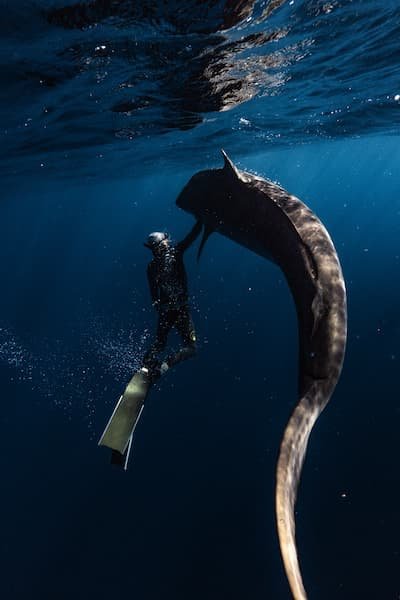
Treating fear as feedback means reframing physiological arousal as data rather than threat. The aim is not to suppress fear but to understand what it communicates. In the context of freediving, a pre-dive pulse increase might indicate insufficient relaxation or a mental projection of danger. By noticing and documenting these markers, divers learn which aspects of the dive provoke the response and how to refine their preparation.
This process resembles biofeedback training. Modern devices can record heart rate variability, muscle tension, and respiration patterns in real time. When divers correlate these signals with subjective states, they build self-awareness. Over time, they can predict and adjust responses before fear escalates.
The concept aligns with adaptive calibration theory, which proposes that stress reactivity can be tuned to environmental demands rather than uniformly minimized. In other words, moderate fear responses serve an adaptive purpose by signaling learning opportunities and prompting focused attention. Excessive suppression of fear can hinder performance, while uncontrolled arousal impairs decision-making. The optimal approach involves responsiveness followed by rapid recovery.
Physiological awareness becomes a compass when the individual learns to map where, when, and why fear appears. Each encounter reveals which internal systems require regulation. The compass does not eliminate storms; it teaches navigation.
Beyond its biological foundation, fear operates as a psychological mirror. It reflects one’s beliefs about control, vulnerability, and mortality. For freedivers, descending into the ocean’s depth often evokes existential awareness. The environment strips away distractions, leaving the diver alone with breath, heartbeat, and the vast unknown.
Psychological growth occurs when fear is neither denied nor glorified but integrated. Exposure therapy in clinical psychology operates on this principle: gradual, controlled confrontation with feared stimuli rewires neural associations. The prefrontal cortex learns to reinterpret signals of threat as manageable, reducing amygdala reactivity over time.
In freediving, this process happens naturally through repetition. The diver repeatedly encounters the sensations that once provoked panic. Through training, those sensations become familiar cues rather than alarms. The body learns safety through evidence, and fear transforms into respect.
Psychological models such as the Yerkes-Dodson law illustrate that performance increases with arousal up to an optimal point, after which excessive stress reduces effectiveness. Skilled divers cultivate the ability to hover near this optimal arousal threshold. They maintain alertness without tipping into panic. The awareness of fear’s gradation, rather than its elimination, becomes the skill.
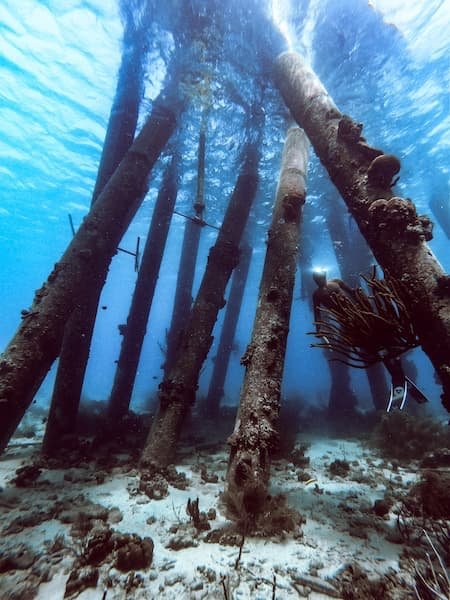
Research into post-traumatic growth (PTG) provides insight into how intense fear can produce transformation rather than damage. PTG refers to the positive psychological changes that occur following struggle with major life challenges. It includes new appreciation for life, strengthened relationships, personal strength, spiritual development, and recognition of new possibilities.
The mechanism of PTG involves cognitive processing of disruption. A person experiences an event that violates core beliefs about safety or control. This dissonance triggers emotional distress, but through reflection and integration, new schemas emerge. The individual reconstructs meaning, often with greater complexity and depth.
In performance or adventure contexts, fear-induced experiences can mirror this process on a smaller scale. A diver who faces a panic episode at depth may, through guided debriefing and reflection, reconstruct their understanding of fear and capability. The memory of the event becomes a foundation for confidence rather than avoidance.
Empirical studies show that the intensity of emotional arousal predicts both distress and growth outcomes, depending on the level of coping resources and social support. This dual potential underscores why fear should not be viewed as purely detrimental. The same physiological energy that drives defensive behavior can, when processed consciously, become the catalyst for growth.
Translating the compass metaphor into practice involves linking measurable physiological states with subjective reports of growth. Wearable technology, journaling, and structured reflection can form the foundation of this mapping process.
A diver might record heart rate variability, oxygen saturation, or perceived exertion during each session, followed by notes about emotional state, confidence, and perceived fear. Over weeks, correlations emerge. Decreasing physiological arousal at the same depth indicates habituation and resilience. A sudden spike in fear may highlight environmental or psychological triggers that warrant attention.
This method parallels psychophysiological profiling used in elite sports. The combination of physiological data and narrative reflection allows individuals to see fear as an evolving signal rather than a static trait. As regulation improves, physiological responses become subtler, guiding the diver toward deeper levels of psychological integration.
The process can also extend beyond sport. The same autonomic markers appear in daily life during stress, conflict, or uncertainty. Recognizing the familiar pattern of elevated heart rate and tension as information rather than weakness reframes ordinary anxiety as training ground. In this sense, freediving becomes both metaphor and laboratory for understanding the body’s wisdom.
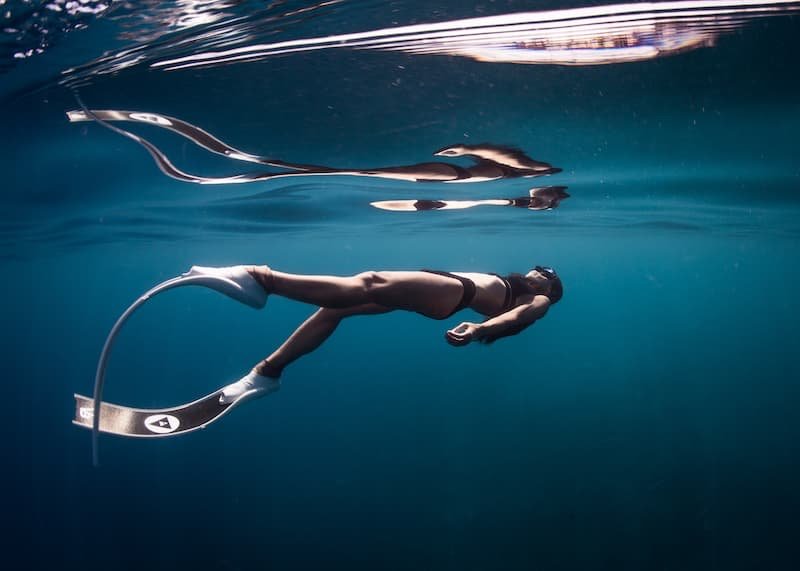
Breathing connects conscious and unconscious control systems, making it a unique bridge between physiology and psychology. Controlled breathing practices such as pranayama, slow diaphragmatic breathing, and carbon dioxide tolerance training directly influence the autonomic nervous system.
Slow exhalation increases vagal activity and shifts the body toward parasympathetic dominance. This not only calms physiological arousal but also enhances interoceptive awareness, the ability to sense internal bodily states. Increased interoceptive accuracy correlates with emotional regulation and resilience.
In freediving, breath is both tool and teacher. Each pre-dive breathing cycle modulates chemistry and emotion simultaneously. The diver learns through repetition that breath is the first instrument of self-regulation. When fear arises, awareness of breath can transform it from overwhelming to informative. The physiological compass becomes accessible through respiration.
When individuals repeatedly engage with fear in controlled settings, their sense of identity changes. Fear ceases to define limitation and begins to signify exploration. This integration mirrors processes described in existential psychology, where confrontation with mortality leads to deeper authenticity.
Freediving embodies this principle. The ocean becomes a space where control is partial and surrender is essential. Each dive is a negotiation between agency and acceptance. Over time, divers report increased calmness, patience, and self-trust outside the water. These traits represent psychological growth mapped from physiological engagement with fear.
Such transformation also redefines courage. Courage is not absence of fear but movement in its presence. The body’s fear responses remain, but interpretation evolves. The compass needle still points to discomfort, yet the diver understands its language.
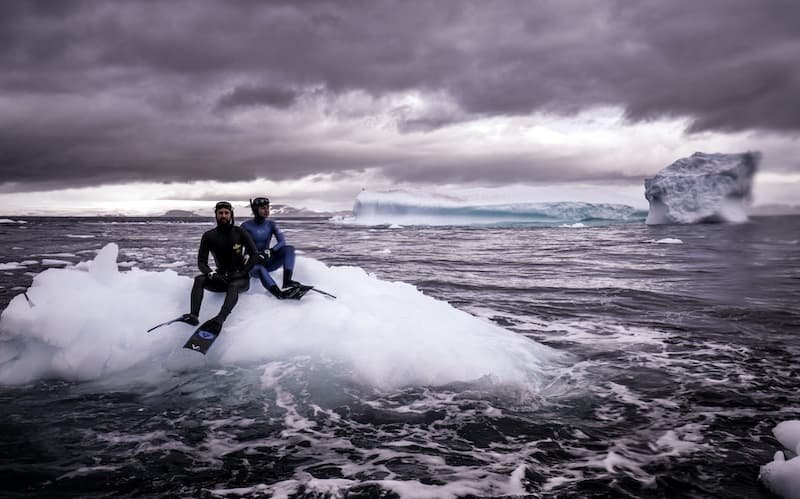
The framework of using fear responses as a compass can be applied in education, therapy, leadership, and creativity. In exposure therapy, for example, patients gradually face phobic stimuli while monitoring physiological arousal. Learning to read bodily signals accelerates desensitization and self-efficacy.
In high-pressure professions such as aviation, medicine, or firefighting, training that includes physiological awareness reduces panic and improves decision-making. The same principles apply to public speaking, negotiations, or artistic performance. Wherever the body reacts with fear, information is available.
Emerging technologies make this approach accessible. Wearable devices can track heart rate, skin temperature, or respiration, providing feedback that transforms abstract emotions into visible data. When interpreted through reflective frameworks, those data points outline the personal map of growth.
Using fear as a compass must be grounded in safety and self-care. In freediving, uncontrolled exposure to fear or hypoxia can have serious consequences. Structured progression, professional supervision, and adequate recovery are essential.
Psychologically, deliberate confrontation with fear requires preparation. Without integration, repeated exposure may lead to sensitization rather than desensitization. The compass should always point toward learning, not harm. Responsible use of physiological data also demands respect for privacy and informed consent, especially when technology is involved.
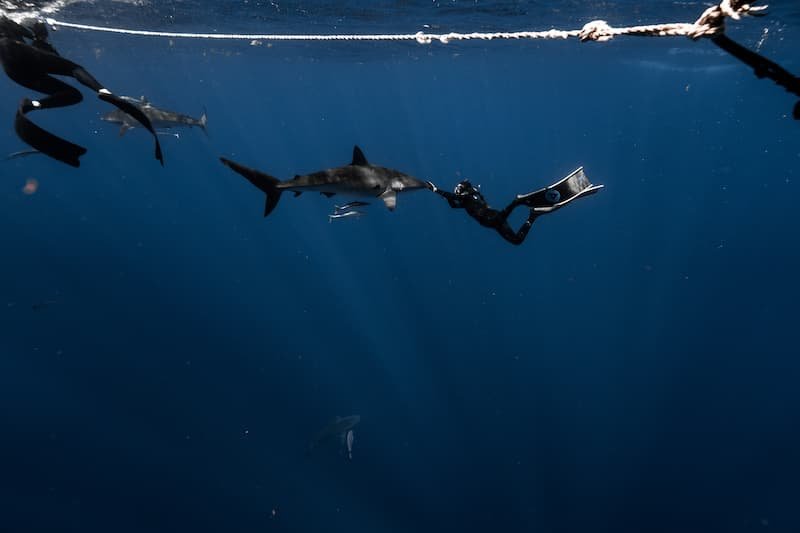
Fear is one of the body’s most sophisticated feedback systems. Its physiological patterns are neither random nor purely protective. When interpreted through awareness, fear becomes a navigational instrument that points to the edges of growth. Freedivers illustrate this principle vividly: their journey beneath the surface is both physical and psychological. The quickening heartbeat, the shallow breath, the tremor before descent are not flaws to eradicate but coordinates on a map of transformation.
By studying and embracing these responses, individuals learn that fear and growth share the same pathway. Physiological data becomes personal cartography, charting progress from reactivity to responsiveness, from instinct to insight. Fear, understood and respected, ceases to be the obstacle and becomes the compass.
References